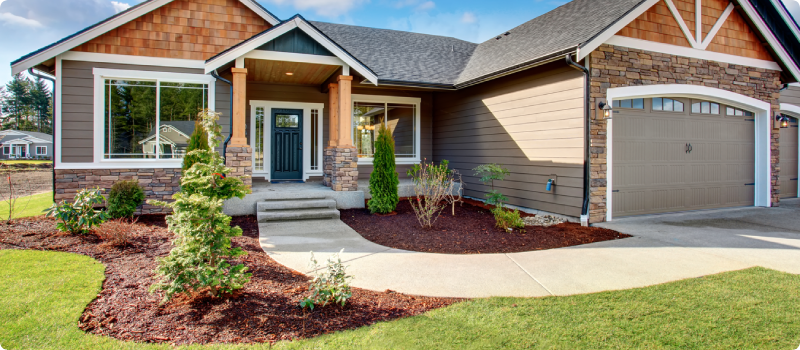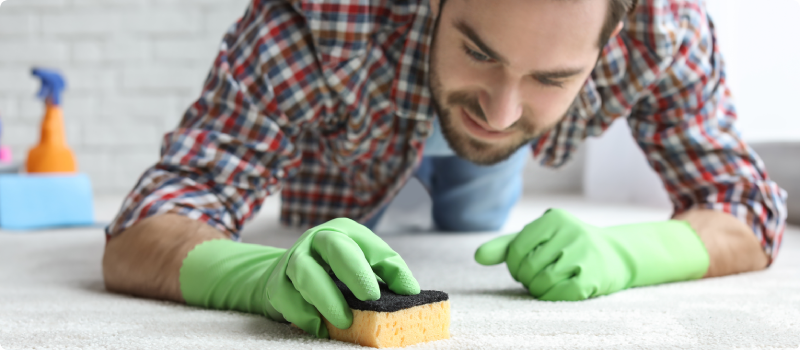How to increase home value for appraisal
Updated April 1, 2024 . AmFam Team
Whether you’re selling your home, taking advantage of equity you’ve built in your home or are looking to refinance your mortgage, you want your home to be appraised at the highest dollar amount possible. And there are plenty of ways besides major renovations, home additions and other expensive improvements to boost your appraisal.

Use the area around your home to boost its appraisal value
A home’s value isn’t just about how it looks and feels on the inside — a lot of it depends on the exterior of the home and the area around it, too. Use these tips to spruce up the outside of your home and the space around it to get your home’s value up!
Improve your house’s curb appeal. Adding a fresh coat of paint to your front door to make it stand out like it used to, getting your window professionally cleaned and illuminating pathways to your home can wow passersby and guests before they even step foot in your home. Making your home appear safe, comfortable and stylish from the outside can boost your home’s value whether it’s on the market or not.
Mow and clean up your yard. An unkempt and uncut yard isn’t very inviting. Making it short and tidy before the appraiser visits is a must, and keeping it that way can boost interest in your home over the course of the time you live there.
Examine the exterior of your home. Damaged siding, missing and lifted shingles or other damage to your home and its exterior can be a real eyesore to buyers. Examine your roof from the safety of the ground and walk around your home to make sure all your siding is intact and clean. If you notice anything amiss, get in touch with a professional as soon as possible. Damaged roofing or siding is not only a detriment to your home’s appearance and value, but can also lead to costly repairs later on.

Increase your home’s value on the inside
Once the appraiser makes their way inside, it’s time for your home to really shine. Take these tips and make your home’s interior a real value-booster:
Document all of your home upgrades. If you replaced any appliances in your kitchen, renovated a bathroom or performed any other improvement projects, document the costs and dates of the upgrades. Seemingly small fixes like replacing older countertops or getting a new dishwasher can add value to your home.
Give your home a deep cleaning. An appraiser should be valuing your home based on how it’d appear as a clean slate to a new buyer, meaning they should ignore the furniture you’d take with you when you move, things on the walls and any other custom items in your house. But that doesn’t mean your home shouldn’t be clean — make it as inviting as possible by giving it a deep cleaning and removing all clutter.
Patch up any imperfections. Re-painting walls, patching up damaged trim and fixing other noticeable blemishes will make the home appear that it’s meticulously cared for — and it is!
If you have flooring or carpet that’s visibly in need of a fix or an upgrade, you could be in for a much more expensive fix. But in the long run, it’s well worth your trouble.
Prepare yourself for the appraisal
The perfect appraiser would focus solely on your home, eliminating all external and personal factors to give you the exact value of your home. But perfection rarely exists in any occupation — here are the ways you can make your appraiser’s visit as easy and comfortable as possible:
Let the appraiser do their job. They’re not there to chit-chat — they’re at your house to determine the value of your home, so don’t follow them around or hound them with questions.
Be open to the appraiser’s questions. Answering the appraiser’s questions honestly and in detail can go a long way towards getting a fair and accurate valuation of your home. Let them know you’re happy to help fill in the blanks anywhere you can from the very beginning.
Preparation is key here, too. Just like you have all the paperwork for home improvements, have all the “whys” for all those changes handy, too.
Do your own comparisons. If homes in your neighborhood have been sold recently, try to find their sale price on a real estate aggregation or city assessor's website. Find the listing, compare its features to yours and take notes — if your home value is distinctly lower than that of a comparable home, ask the appraiser and/or their company to go over the differences in value.
Once you’ve had your home appraised, get in touch with your American Family Insurance agent to make sure your homeowners insurance is giving you the peace of mind you deserve.
This article is for informational purposes only and based on information that is widely available. This information does not, and is not intended to, constitute legal or financial advice. You should contact a professional for advice specific to your situation.

